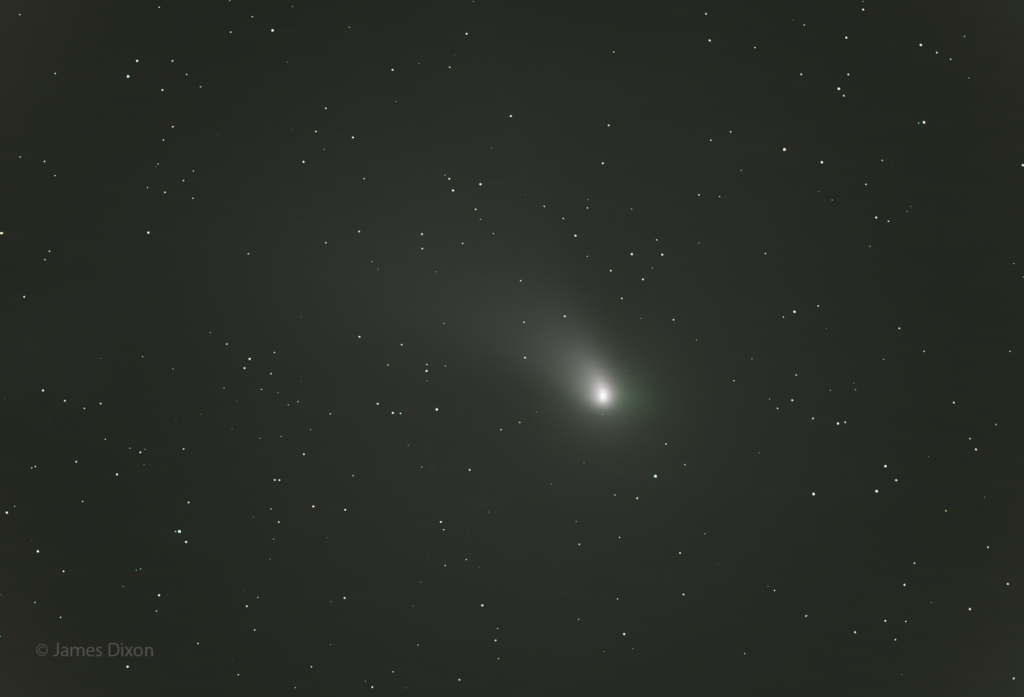The Moon shot Friday night shortly after it rose. If I wanted really high resolution, I would have waited a few hours until it was higher. I used my 127mm MCT telescope and my Canon 800D camera. Merged and processed in Lightroom.

While my DSLR was shooting the Orion Molecular Cloud Complex, my C11 (Elf) and ASI294MC Pro (which has no name) was shooting the currently famous comet at f/1.9. Below we have the result of 120 60 second images with both the comet and stars stacked independently. I’ve seen better but this one is mine. Taken Friday evening at the River Ridge Observatory.

Here is my view of the Tau Meteor shower last night. It was no “storm” but to be fair every mention of “storm” that I saw included a big disclaimer.
You will see a few aircraft or maybe satellites and several flashes. Those flashes are the meteors.
This is about two and half hours reduced to 30 seconds. I used a reducer on my 18mm kit lens to achieve an almost full sky.
At the top is the Big Dipper, nearly vertical. Near the center, that bright star is Arcturus. Notice that the handle of the Big Dipper “arcs to Arcturus”. The bright star at about 4 o’clock from Arcturus is Spica, brightest star in Virgo. Over on the left, near 9 o’clock is Vega. North is at top, east to the left.